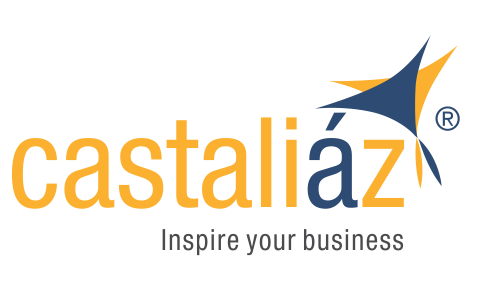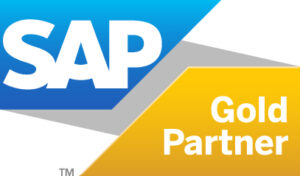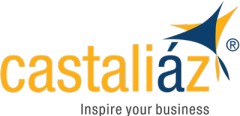S/4HANA Greenfield – Our approach
This is first in the series of several blogs regarding SAP S/4HANA Greenfield Implementations. In this blog, I am going to explain what are the various approaches to implement SAP S/4HANA application and specifically the Greenfield Approach. In my next blogs, I will explain other approaches to implement SAP S/4HANA.
If you are an existing SAP customer, sometime in the near future, you may have to move from legacy SAP ERP (like ECC or even 4.x versions) to SAP S/4HANA since the maintenance and support of old versions is available until 2025. You should start planning to move to S/4HANA to ensure your business continuity and also take advantage of the functional and technology enhancements in SAP S/4HANA.
There are various approaches to move from your existing legacy SAP ERP to SAP S/4HANA:
- Greenfield Approach
- Brownfield Approach
- Hybrid Approach (Bluefield Approach)
Let me explain you what is the Greenfield approach to implement SAP S/4HANA.
The term “Greenfield” is often used to refer to a “New Project” or a project which is being executed “ground up”. Colloquially, most of us refer to them as “projects that start from scratch”. From the context of SAP, we often use “Greenfield Projects or Implementations” to refer to SAP S/4HANA implementations from ground up.
But you may still prefer to implement S/4HANA from scratch discarding most part of the legacy applications. Such Projects are referred to as Greenfield Projects by many in SAP ecosystem.
Greenfield Implementation Strategy
S/4 HANA Greenfield implementations are usually structured into various Phases such as Prepare, Explore, Realize, Deploy & Run.
Prepare
In this phase, you prepare a project plan with detailed schedule and milestones based on the project scope, form project teams and steering committee, assign all required resources (like project team, IT infrastructure) to the project, setup SAP Application landscape and finally conduct a project kick-off presentation.
Explore
In this phase, the project team creates the solution design and build the POC (proof-of-concept) solution based on the Project Scope along with Integration workbooks and Unit Testing Scripts.
First, the project team analyses your existing SAP Landscape including your configured business processes, custom development, Master Data, Open Item and integration scenarios.
Then, the project team uses the Best Practices, Pre-configured Scenarios and Demo company included in SAP S/4HANA to build the POC and present it to the business users to get a confirmation about the performance of all business scenarios as per business requirements mentioned in project scope.
Gaps in the POC are identified to prepare a list of Configuration, Custom Development & Integration Scenarios.
Realize
In this phase, the project team completes the Configuration of Business processes, Custom Development and Integration with other applications.
Data Migration programs to transfer Master Data and Open items are developed. Integration testing is performed along with Business Users. All defects are addressed until Business Users accept the system.
Deploy
In this phase, the production system is setup, configuration and custom development objects are transferred along with master data and open items. Data required for Business Planning & Forecasting is also transferred from legacy applications to SAP S/4HANA. All integration scenarios are implemented and tested for Production environment. Access to the production environment is provided to all business users with appropriate authorizations.
Run
In this phase, the business users start performing their business transactions on the new SAP S/4HANA application. Project team shall support the business users and resolve all issues that may arise during production operations.
Pros and Cons of Greenfield Approach
In this section, I am going to explain you the pros and cons of Greenfield Implementation approach of SAP S/4HANA (for legacy SAP ERP users)
Pros:
- You get the opportunity to re-engineer your processes across all your business functions
- You may be able to drop some or most of the customization and use the enhanced capabilities of S/4HANA
- You can use standard Industry processes and Best Practices available with S/4HANA without getting concerned about conflicts with existing processes already configured.
Cons:
- You have to go through all the activities of a complete end-to-end Implementation project
- Your IT team has to get trained in managing HANA database
- You may have to archive old transactional data for future reference or audit purpose
- You may have to transfer old data to S/4HANA for business planning and forecasting
- Implementation time is longer and the cost is higher
Factors that impact your decision
In this section, I am going to explain some of the important factors that have an impact on your decision making – whether to consider Greenfield approach or other approaches.
How old is your SAP Version?
If your SAP ERP version is old (like R/34.x), using other approaches involve complex technical activities to convert code and data, so that they are compatible with S/4HANA. Hence Greenfield approach may seem as a less riskier option.
How much time do you have to move to new version?
If you have less time to move to S/4HANA, then other approaches are more suitable, since Greenfield Implementations take longer time.
How much data you have to archive or take forward?
If you can archive most of your old data for future reference, then you can opt for Greenfield approach. If you need your past transaction data even in your new ERP i.e. S/4HANA, then other approaches are more suitable.
How much custom development you have to take forward?
SAP S/4HANA has more capabilities and best practices that may suit your business and business models, more than before. In the past, you may have developed custom applications to meet requirements specific to your business. However, you may not need some or all of that in S/4HANA. If you do not need most of the development, then Greenfield approach is more suitable.
How much has your business changed since you last did a major enhancement?
If your business processes have changed significantly since your last major enhancement on your legacy SAP ERP, then you may strongly consider Greenfield approach. However, if there are minimal changes in your business processes, then you may consider other approaches.
Conclusion
It is very important to select the right strategy to move to SAP S/4HANA, if you are already using legacy SAP Applications.
If your business runs on a legacy SAP application which is at the end of its maintenance lifecycle and with signification gaps in business processes and huge customization, then you may explore the suitability of Greenfield approach.
If you are on SAP ECC versions with latest Enhancement Packages (EHP) that supports your business processes with minimal customization, you can select one of the other approaches – i.e. Brownfield or Hybrid approach.
You can reach me at [email protected], if you need any help in deciding the right approach to migrate to S/4HANA.


